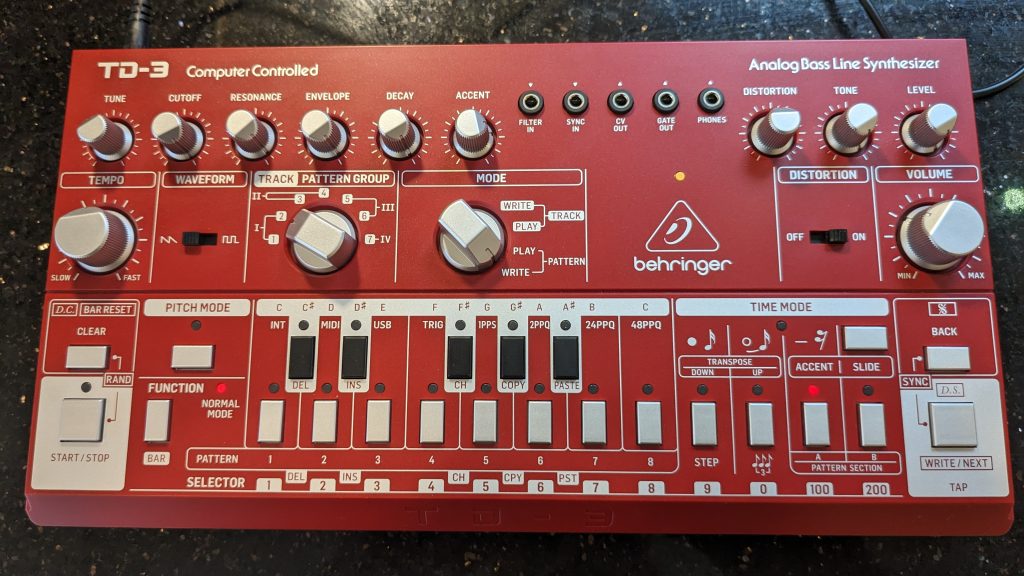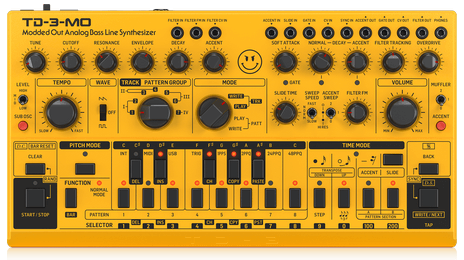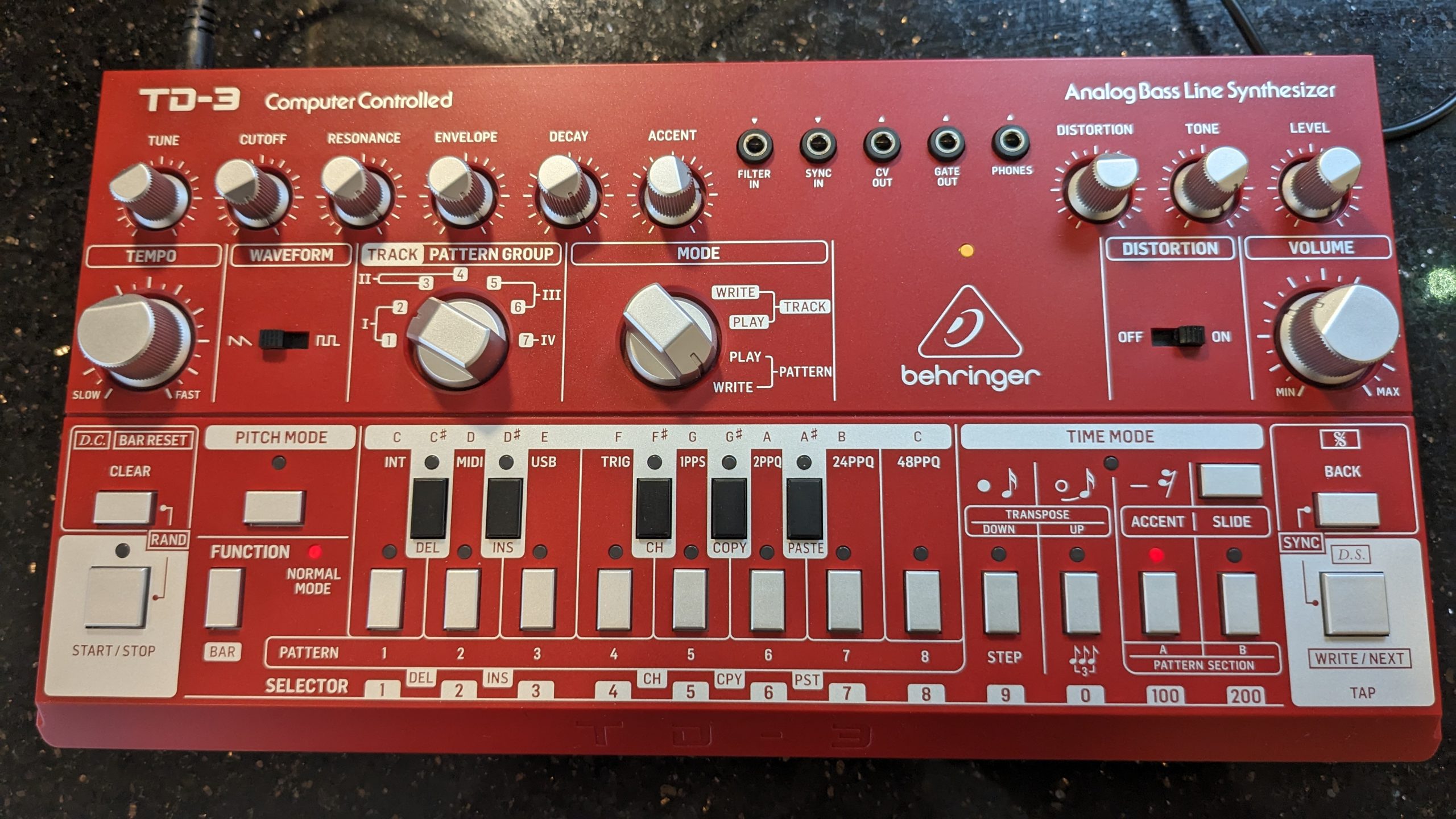The Behringer TD-3 is a faithful recreation of the classic Roland TB-303 Bass Line synthesizer, with the same classic sound, some added features and enhancements, and the same love it or loath it sequencer (more of that later) at a bargain basement price.

Design and Features
The TD-3 has a very similar design and layout to the original TB-303, with a few differences. It has a plastic case, but it feels sturdy, albeit light weight. It has a 16-step sequencer with buttons for pitch and time entry, as well as a mode selector, a tempo knob, a run/stop switch, and a pattern group selector. It also has a transpose button, a slide button, and an accent button, which can be used to add expression to the sequences.
The TD-3 has a single oscillator with a sawtooth and a square wave, which can be selected with a switch. It also has a filter with cutoff, resonance, envelope mod, and decay knobs, as well as a tuning knob. The filter can be switched between 18 dB and 24 dB modes, which affects the slope and the sound of the filter. The TD-3 also has a volume knob and a tone knob, which can be used to adjust the overall sound and the distortion level.
For connectivity there is a 1/4 inch mono audio output, a MIDI input and output/thru, a USB port, and a power input. It also has a 3.5 mm sync input and output, which can be used to sync with other devices. Power comes from the 9V adaptor. The TD-3 also has a Synth Tool app, which can be used to edit the sequences, change the tuning, and update the firmware.
Sound and Performance
The TD-3 sounds very close to the original TB-303, with some subtle differences. It has a warm and punchy sound, with a lot of character and attitude. The oscillator has a nice analog drift, and the filter has a smooth and resonant sound. The filter can also self-oscillate, which can create some interesting effects. The distortion adds some crunch and harmonics to the sound, and it can be adjusted from subtle to extreme.
You can hear the TD-3’s distinctive sound in a pattern slicing through this track
Manipulating the tone on the TD-3 is very easy and fun, however unless you are familiar with the TB-303 workflow, you might find the sequencer to be horrific You have to enter the notes and timings separately. To be honest I wish this part of the TB-303 is one that Behringer did not replicate and instead could of taken the opportunity to improve upon. More often than not I found myself simply reaching for the random function. Still if you are determined to learn the sequencer or know it already from other legacy devices, then it can definitely work well and often with accidental success rather than planned. Youtuber @CaptainPikant unleashes his frustration also, but has a helpful tutorial on using it.
Also accessing some of the settings such as the clock is also a bit quirky, but here is a helpful guide for that How to change the Behringer TD-3 Clock Sync
The TD-3 is a versatile and powerful mono bassline synthesizer, and it can be used for various genres and styles of music. It can create some classic acid sounds, as well as some modern and experimental sounds. It can also be used as a sound source for effects pedals and processors, and it can create some amazing textures and atmospheres.
Conclusion
The Behringer TD-3 is a great device for anyone who loves the acid sound and wants to have a true analog experience at a rock bottom price. I picked up one on ebay in mint condition for around £70. It is a faithful recreation of the TB-303, with some added features and enhancements. Pair it with a simple drum machine and you are ready to start some serious Dawless Jamming.
Available to buy now: Behringer TD-3 on Amazon in a variety of Colors

If you want even more features and connectivity then you should look into the more expensive MO (Modded Out) version

Disclaimer
As an Amazon Associate, I earn commission from qualifying purchases.
